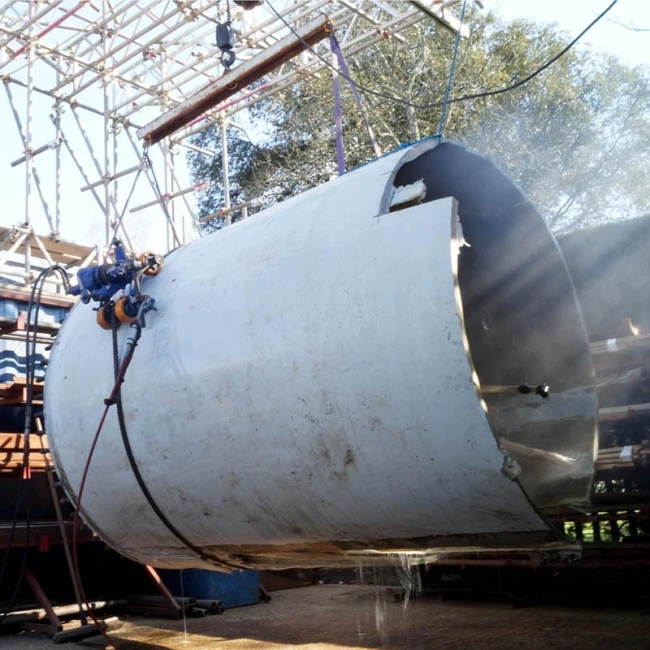Redrow Homes - Hydrodemolition Cutting Pockets into Reinforced Concrete Slab

Hydroblasting precision pockets on residential building sites
- Customer: Redrow Homes / Foundation Developments Limited
- Service: Concrete hydrodemolition and pocket cutting
- Industry: Civil Engineering
When Foundation Developments Limited and Redrow Homes needed precision hydrodemolition to removal concrete from 8 locations in support of architectural redesigns. RGL responded with a water jetting solution to remove the top 150mm of concrete from specific zones while adhering to strict residential noise level limits.

RGL were approached by Foundation Developments Limited (FDL) early in 2014 to submit a proposal for Hydrodemolition works involving the precision removal of concrete from 8 locations. The requirement was to remove the top 150mm of concrete from areas measuring 3.5 metre squared.
After a site visit undertaken, the formal quotation for the works could be issued. RGL were required to provide detailed Health, Safety, Environmental and Quality information to FDL in order to become an approved supplier.
Prior to an order being placed FDL requested a noise survey, which was provided, as the work was to be undertaken opposite Lymington railway station and strict noise level limits were in place. Following this submission a visit to a live site was requested to be undertaken by FDL with their client Redrow Homes in order to gain a clearer understanding of RGL’s Hydrodemolition process. Not only to see the cutting method in action but also experience the noise generated.
Once this visit was completed both parties were satisfied that Hydrodemolition was the best method to employ for the project, and an order was issued following additional site meetings to finalise the scaffolding requirements for the project. Due to the noise restraints in place it was decided that a full working enclosure was required, and that this would be covered with timber sheets and acoustic barriers on the external face, with debris netting covering the top.
Bob Mullen from Redrow Homes commented:
“By using the robotic precision Hydrodemolition system, RGL were able to perform a top quality job for us. Our task suited the system well and it is a great step forward from traditional hand held breaking methods”

A further factor had to be considered, which was waste water filtration and Ph adjustment. It was imperative that discharge consent was obtained from the local council prior to the works commencing, along with a suitable plan as to where the treated water would be discharged too.

The method of Hydrodemolition used for this project was ultra high pressure semi-robotic meaning all of RGL’s operatives were away from the work face during the works. This eliminates many of the hazards typically associated with water jetting as the operatives, set up the system and leave the work area once the jetting work starts. The water jetting work is then controlled via a hand held remote control panel. The control is used to stop and start the jetting unit, and control the pace of the nozzle as it traverses and moves across the area to be removed. This method of Hydrodemolition is one that RGL are keen to utilise and employ wherever possible due to the additional health and safety benefits it provides. A major benefit of using the X/Y axis cutting frame and a key factor in reducing noise and flying debris created during this process is the use of a protective rubber debris deflection disc, which is placed directly behind the jetting nozzle.

No separate pockets were required to be cut to accurate depth so that extra reinforcement could be installed. The total volume of concrete to be removed was 14.7m3 (1.8375m3 per location). The project ran for 14 shifts and was a great success, with the work being finished on schedule, with all waste water treated and discharged into an onsite drainage system as per the consent criteria. There were no complaints of noise from any stakeholders and the finished job left the pockets as required enabling additional steel reinforcement to be added.
If you would like to know more about our underwater Hydrodemolition services, Contact RGL today.
Request a call back


